How Body Neutrality is Winning in Consumer Culture
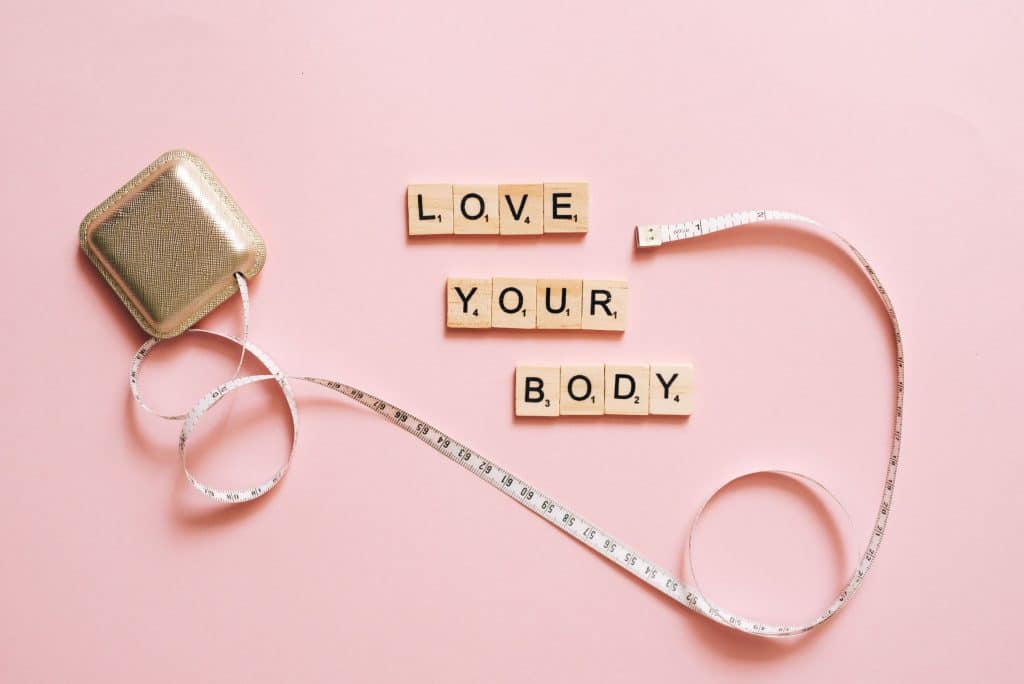
If you work in consumer insight, innovation, or marketing, odds are, you’ve had discussions about the body positivity movement (#bopo) and how this culture is impacting your business. After all, how we perceive and discuss the body can have a huge impact on how we conceptualize and position products, and how we create the messages we use to sell them.
In this recent Forbes article, Jennifer Jay Palumbo talks about how body positivity has been garnering a great deal of attention of late. The idea that people should be more accepting of all bodies, regardless of size, shape, skin tone, gender, and physical abilities, has become a mainstream cultural movement.
But like any culture, the body positivity movement is in flux.
In fact, if you leverage AI (artificial intelligence) Anthropology to decode the meanings that Americans are using to engage with and understand the role of the body and body positivity, you can see that a major shift is underway.
Namely: Body positivity is being replaced by body neutrality.
Let us use the Lux Motivbase Trends Platform to better understand why.
How is body positivity defined?
Body positivity refers to having a positive view of your physical body, regardless of shape, size, or other appearance-related attributes. It involves appreciating your body for what it is, even if it is not “ideal” according to society’s standards.
When we search “Body Positivity” in the Lux MotivBase Platform, our AI Anthropology algorithm analyzes the dominant topics that consumers associate with body positivity to identify the most dominant sets of meaning that people associate with this culture.
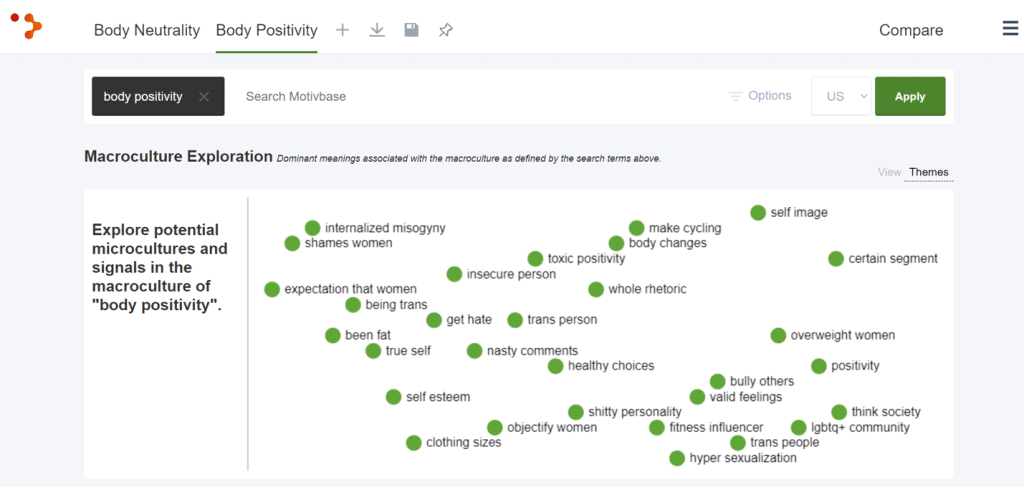
As we can see in the cultural universe outlined above, consumers are increasingly associating the topic of “body positivity” with unrealistic expectations, the objectification of women, and the historical issues in how women’s clothing sizing has been managed by the fashion industry.
This is all to be expected.
But these topics are also clearly revealing a tension in the culture.
First, consumers are increasingly linking the culture of body positivity with “toxic positivity.” Toxic positivity happens when people believe that negative thoughts about anything should be avoided. Even in response to events that normally would evoke sadness, such as loss or hardship. The concern is that toxic positivity can often overlook and dismiss true expression.
Secondly, we can see that consumers are linking body positivity with the negative impact it can have on people’s health as it fails to consider the health concerns that can arise.
Lastly, we can see that consumers are increasingly linking the culture of body positivity with the way it has fallen short of its inclusivity goals and created challenges for the LGBTQ+ community.
As a result, when we look at the size of the “body positivity” culture in America today, we can see that it is relevant only to 42.7 million Americans.
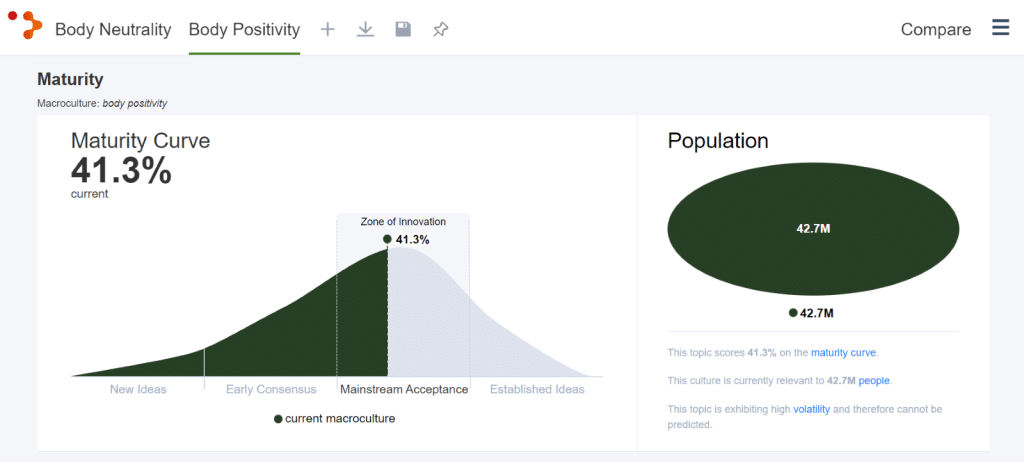
The culture is a mainstream topic, but it’s volatile, meaning there is a lack of consensus about the role body positivity should play in our lives. In other words, the culture is undergoing change. It is currently not growing in relevance in American culture.
Now, let us compare this with body neutrality.
How is body neutrality defined?
Body neutrality differs from body positivity in that it doesn’t involve always loving your body but is more about accepting it. Instead of concentrating on your physical appearance, the focus is more on the body’s abilities and nonphysical characteristics.
When we search “Body Neutrality” in the Lux MotivBase Platform, we get a vastly different set of meanings from what we saw for body positivity.
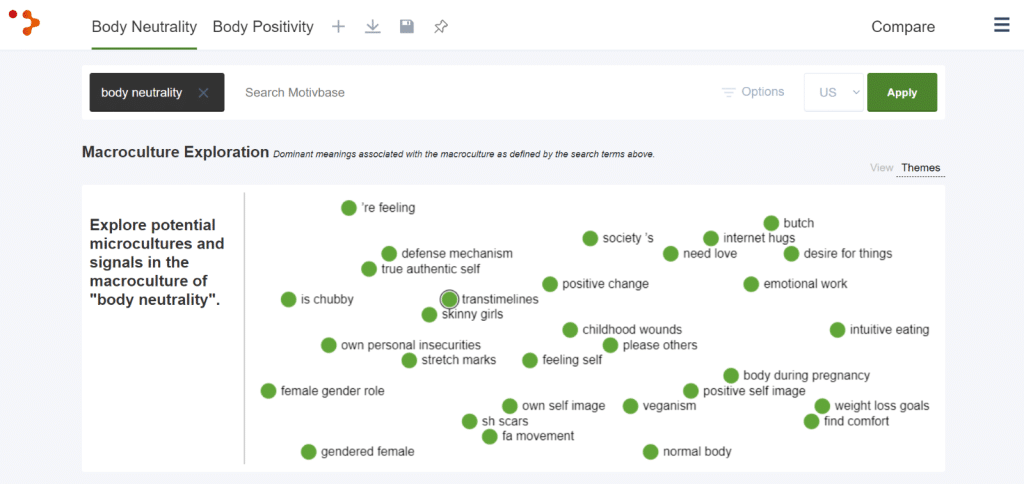
As we can see in the cultural universe, consumers are increasingly associating the topic of body neutrality with better understanding their self-image, considering the role of internal insecurities in how they make us view ourselves and the role other people’s expectations can play in shaping our self-perception.
But these topics also highlight solutions to the tension we saw in the body positivity culture.
First, consumers are embracing the notion of authenticity and how they need to consider what emotional work needs to be done to achieve a healthy relationship with their body. It’s not about absolute positivity as much as it’s about investing time and effort to discover how to make positive changes.
Second, it is taking health into consideration. Intuitive eating and a consideration that one can appreciate the body and still work toward a balance between fat acceptance and finding a healthy way to achieve reasonable weight-loss goals is built into this culture.
Lastly, unlike body positivity, which was dominated by concerns for “women,” body neutrality is more inclusive of men, as well as the LGBTQ+ community.
As a result, when we look at the size of the body neutrality culture in America today, we can see that it is relevant to only 63.9 million Americans.
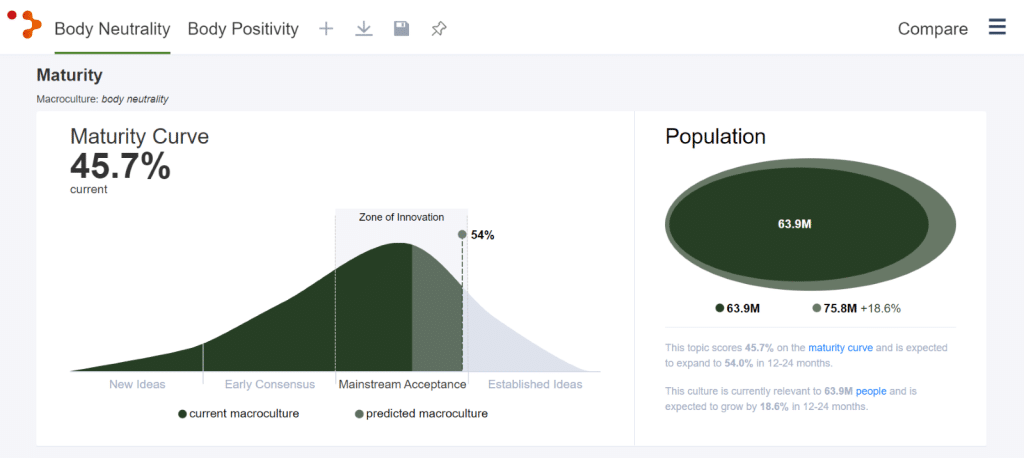
Not only is the culture in the mainstream, but it also is exhibiting high growth.
By looking at the past five years’ worth of online engagement, our AI Anthropology algorithm has tracked the trajectory of this cultural trend and anticipates that it will grow to be relevant to an additional 18.6% of the American population in the next two years.
Why is the culture of body positivity dying?
When an innovation or insight team is looking to leverage a trend or align its innovation or R&D initiatives with consumer culture, it can’t focus solely on “what” is happening. We also need to decode the “why.”
To do this, we must look at the unique motivations, values, and fears that guiding the choices consumers make in navigating the world around them. When we look at the past year’s worth of engagement around the culture of body positivity and body neutrality (as shown in the screen capture from the Platform below), we can see commonality. People are trying to understand these issues because they want to be true to themselves, they want to be accepted as desirable, and they are challenging traditional gender norms.
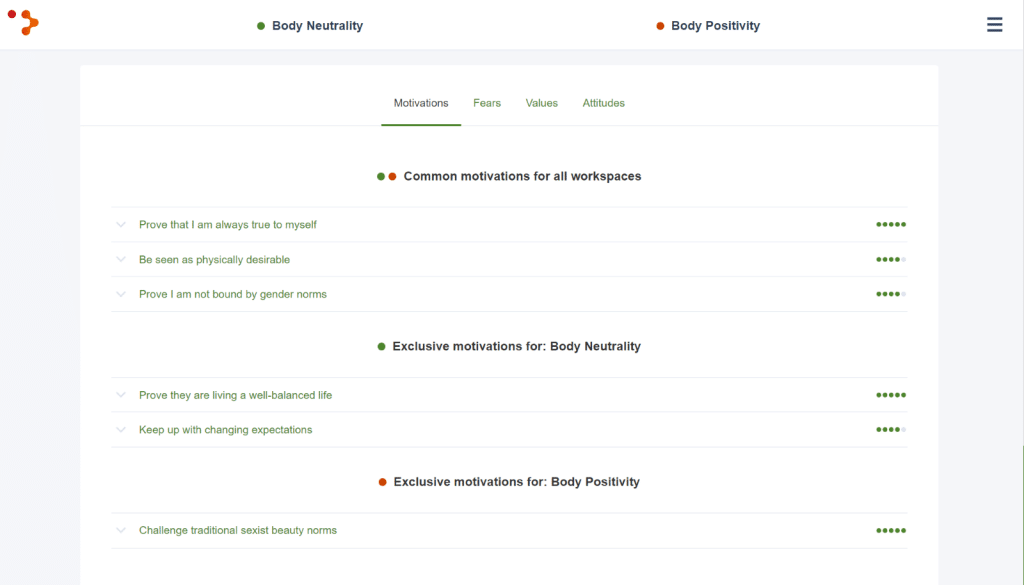
But when we look at the unique motivations, we can see that body positivity is political in nature. It is about challenging traditional sexist beauty norms and, in a way, changing the world.
Body neutrality is about what is right for the individual. It’s about keeping up with changing expectations and proving that one is living a balanced lifestyle.
This is further seen in the values that people associate with these cultures (see image below). The culture of body neutrality is linked to self-confidence and compassion.
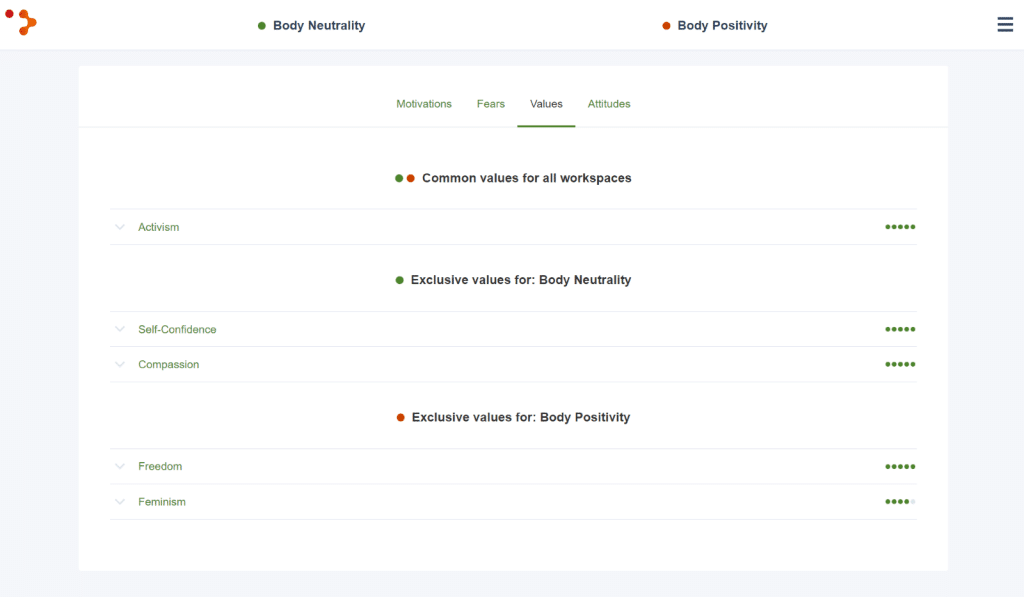
The culture of body positivity is linked to freedom and feminism. While both cultures are associated with the value of activism and making the world a better place, one is inclusive of the individual and their personal journey, while the other is linked to a more ideological purpose that is increasingly alienating people trying to determine what is the right way to think about their body image.
What does this all mean?
If you were to compare these terms using traditional trend tools (as we have in the Google Trends image below) for the past year, you would see more occurrences of conversation regarding “body positivity.”

Numbers represent search interest relative to the highest point on the chart for the U.S. and time. A value of 100 is the peak popularity for the term. A value of 50 means the term is half as popular. A score of 0 means there were not enough data for this term.
But this is considering only “what” people are talking about. Without performing an anthropological exercise, we fail to understand that while there may be more conversation around body positivity, that conversation is driven by the shortcomings of how this movement has served the people that care about it.
If you are an insight or innovation professional, and you are considering how body image may impact your category, you need to get to the “WHY.” To understand shifts in culture, you need to consider the meanings shaping culture and how these meanings can help us anticipate change before it occurs.
Body neutrality is solving the consumer’s problems in a way body positivity never could.
